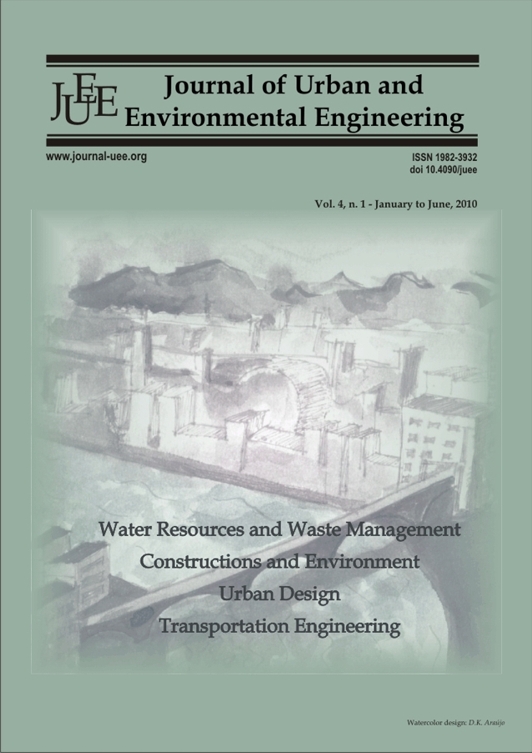LEAD DISTRIBUTION BY URBAN SEDIMENTS ON IMPERMEABLE AREAS OF PORTO ALEGRE – RS, BRAZIL <a href="http://dx.doi.org/10.4090/juee.2010.v4n1.001008">(doi: 10.4090/juee.2010.v4n1.001008)</a>
DOI:
https://doi.org/10.4090/juee.2010.v4n1.%25pKeywords:
Urban sediments, diffuse pollutionAbstract
Heavy metals, like lead (Pb), are subproducts of industrial activities; however, in recent years, studies have shown that even in non-industrial areas, elevated concentrations of this element have been found. In this study, Pb concentrations were measured in 20 composite samples of urban sediments collected in an urban watershed of 4.85 km² with three types of soil use (commercial/residential, commercial and industrial) in the city of Porto Alegre, RS, Brazil. Concentrations were determined by acid digestion (EPA 3050) of the 209 µm, 150 µm, 90 µm, 63 µm and 45 µm fractions followed by atomic emission spectrophotometry with inductively coupled plasma. Average values of 178.1 µg.g-1 (± 332); 226.5 µg.g-1 (± 500); 245.2 µg.g-1 (± 454.1); 272.4 µg.g-1 (± 497.3) and 251.5 µg.g-1 (± 322.6) were obtained in the 209, 150, 90, 63 and 45 µm fractions, respectively. Concentrations of the metals studied were interpolated and represented geographically using Idrisi© Andes. Results show that the greatest concentrations are located in the commercial part of the study area, characterized as presenting high vehicle flow most of the day, with this being considered a potential source of lead. All concentrations were above that of the local background. Studies of this type are important because they make the establishment of control targets possible within sustainable management of water resources, allowing inferences regarding future pollution scenarios of local water resources.Downloads
Download data is not yet available.
Downloads
Published
2011-01-07
Issue
Section
Articles




